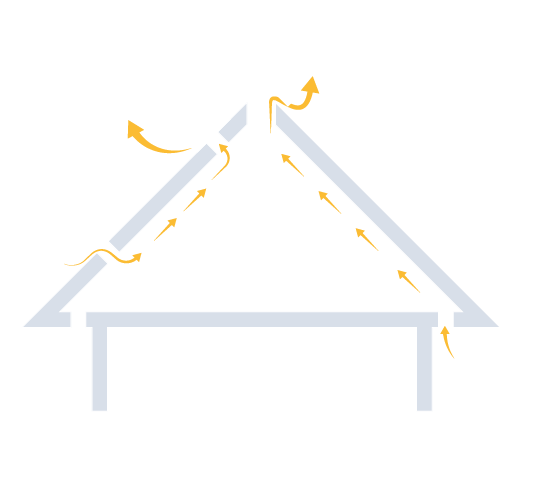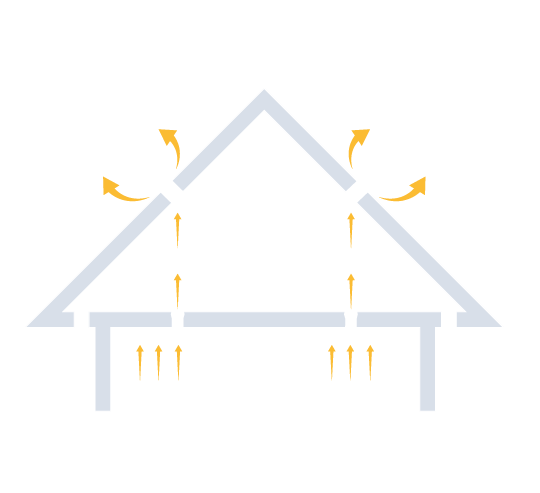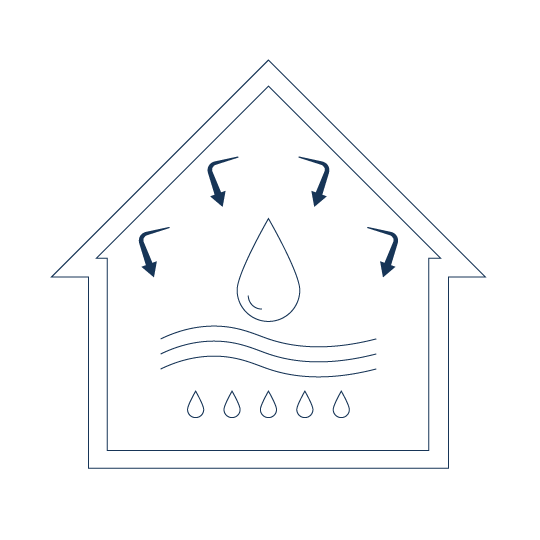CONTROLLED Ventilation with ents
LEAD HUMIDITY AWAY from living quarters and get a healthy house with a comfortable indoor climate

Ventilation of the attic
To ensure a sustainable roof construction with a long life it is important to ventilate sufficiently to remove humidity and prevent it from causing damage.

Residential ventilation
An average family produce approximately 10-15 litres of water vapour every day. It must all be removed to maintain a healthy and comfortable indoor climate.
There are many good reasons to ventilate

healthy family life
A poor indoor climate affects the health of the residents of the house. An average family produces approximately 10-15 litres of water vapour every day. Among other things it comes from showering, cooking and washing. High relative humidity can potentially contribute to respiratory disorders such as asthma and allergies.

Prevent dry rot and mould growth
Humidity trapped in the attic will eventually damage the roof construction. It reduces the life span of the roof and provides good conditons for attack of dry rot and mould growth in the wooden parts. Given the right conditions dry rot will cause the wooden construction to decay within 4-10 years – but it can be stopped with proper ventilation.

Make life hard for the bugs
High relative humidity provides good conditions for housedust mites. Likewise, wet wood in the construction makes it an easy target for wood-destroying insects like death watch beetle and house borer. They will destroy the wood from inside and can be hard to get rid of.

Eliminate polution and gases
Proper ventilation ensures elimination of poluted air. e.g. gases from building materials and equipment. Radon may seep up from the underground. If no radon remediation measures have been taken in the house it needs to be ventilated back outside.
Finanacial advantages
When ventilated, the construction as well as the roof material last longer, and heating of a building is cheaper as heating of dry air requires less energy than heating of humid air.
Air tight buildings require good ventilation
Modern buildings become increasingly better insulated and more airtight. It is good for energy consumption, but it does impose high demands on the ventilation. The more airtight a house is – the higher the risk of condensation and accumulation of humidity, and the highter the request for continuous ventilation.

